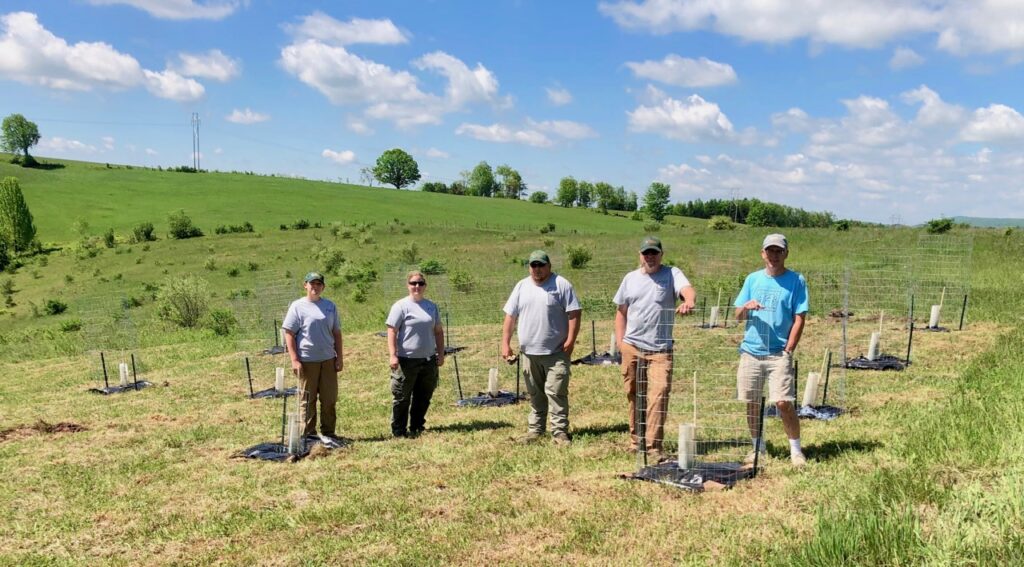Savage River State Forest Orchard

On May 27, 2021, 17 wild American chestnuts were planted in the Peapatch Lane orchard in Garrett County. These seedlings join another group of about 20 trees planted two years earlier. These seedlings are part of the Maryland Chapter’s germ plasm preservation effort that is part of TACF’s effort to develop a blight resistant American chestnut hybrid. These seedlings will require about a decade to reach sufficient maturity to bloom and have nuts. By that time the parents of these trees will likely have succumbed to the blight. Wild American chestnuts are relatively common in western Maryland, but the vast majority of these trees are small understory trees with little chance to grow sufficiently to bloom and have nuts. And the majority of the trees that do have nuts are not in easily accessible locations. By creating germ plasm orchards with better access and growing conditions than in the wild, the Chapter hopes to have an important source of wild American mother trees for the next generation of hybridization.

